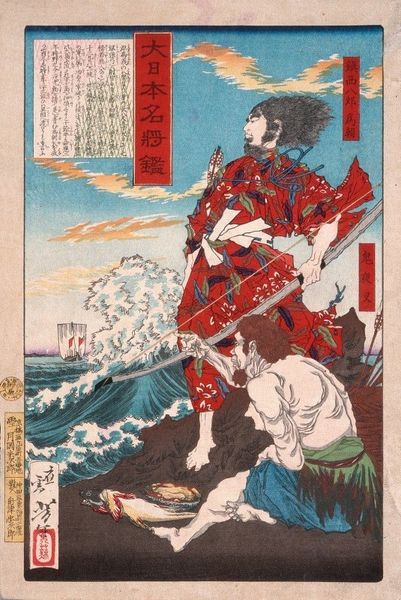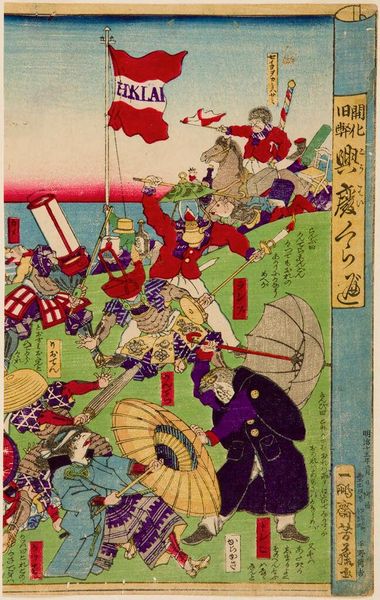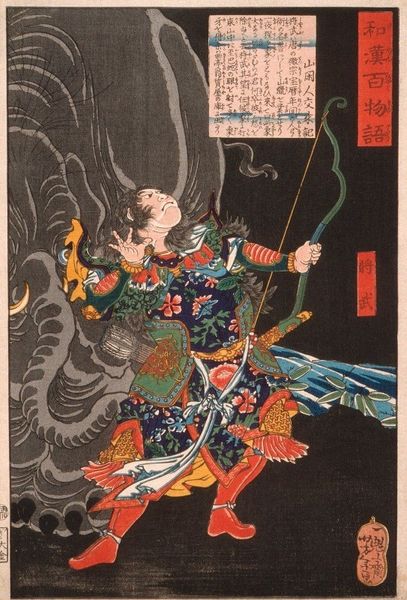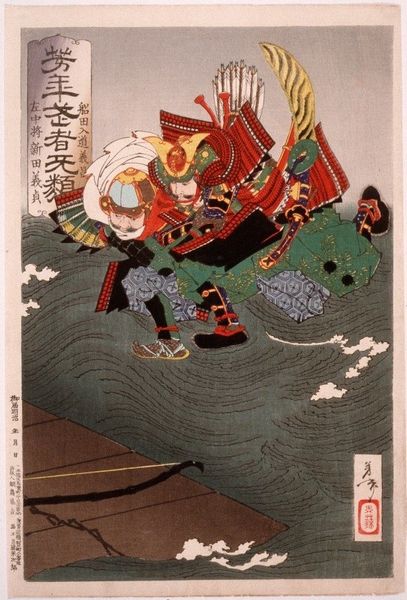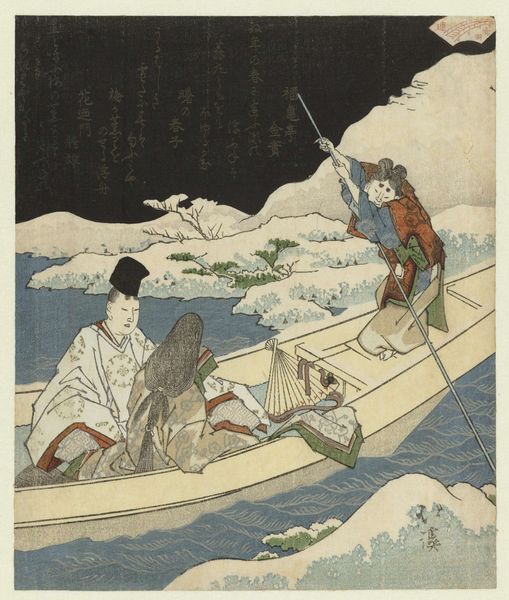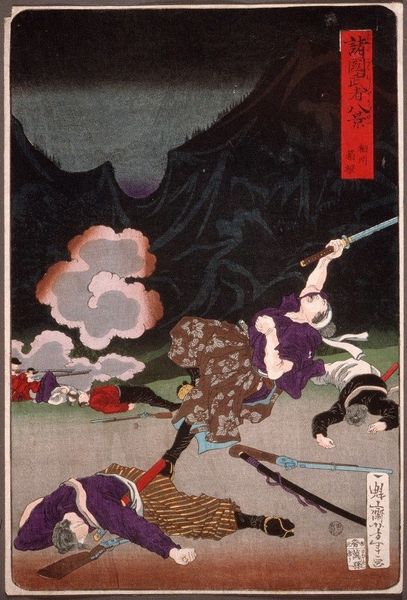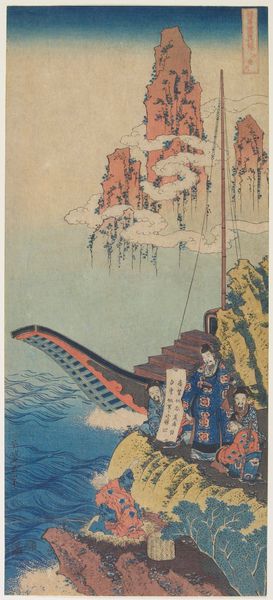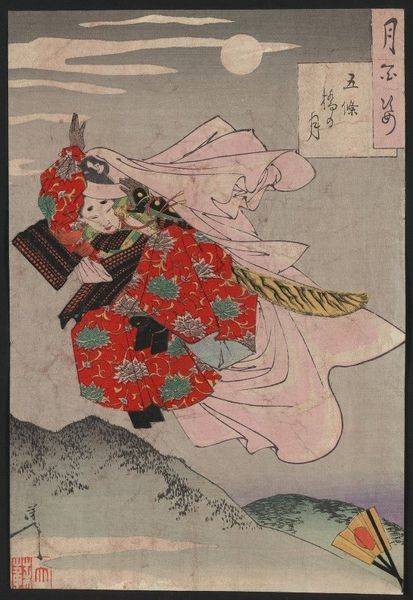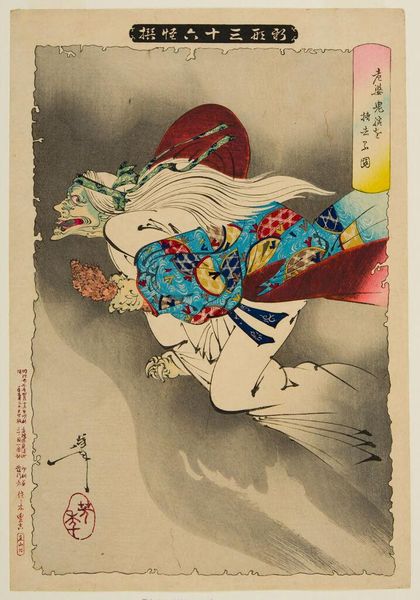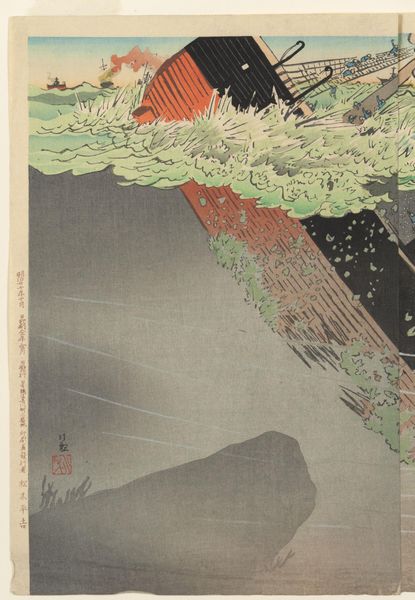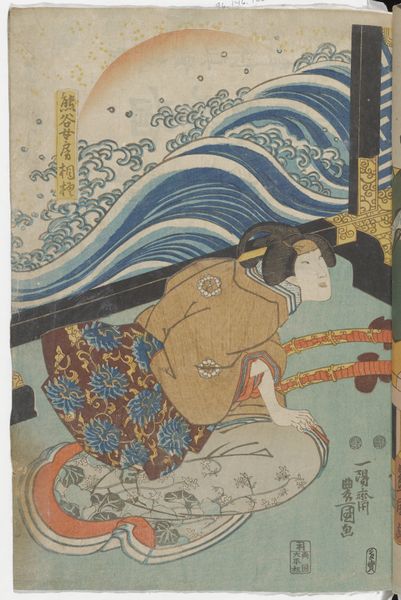
Copyright: Public Domain: Artvee
Tsukioka Yoshitoshi created this woodblock print depicting Empress Jingū and Takeuchi no Sukune fishing at Chikuzen, likely in the late 19th century. It reflects the artist's interest in historical narratives and legends, themes that would have resonated with the cultural and political climate of Meiji-era Japan. The image presents Empress Jingū, a semi-legendary figure, in the act of fishing, attended by her retainer, Takeuchi no Sukune. This scene draws upon a well-known legend, associating Jingū with military prowess and divine favor. In Meiji Japan, where there was a push to modernize and simultaneously reinforce national identity, historical figures were often used to symbolize and promote particular values. How do legendary or historical depictions, like this one, serve the political purposes of their own time? Historical prints like these were widely circulated. Through them, we can analyze not only the artistic skill of the artist but also the social and political ideas circulating at the time. Historians use these prints to examine the ways in which historical narratives are constructed and employed.
Comments
No comments
Be the first to comment and join the conversation on the ultimate creative platform.
